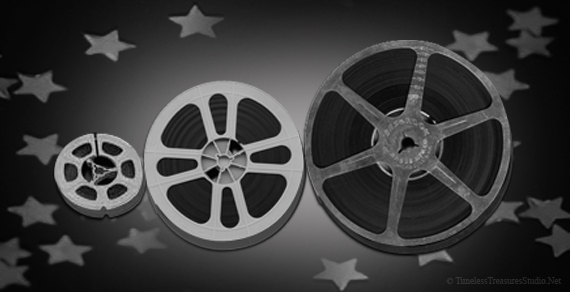
Standard 8 mm, Super 8 mm, and 16 mm
| Length | 50 feet | 50 feet | 51-200 feet | 201-400 feet | 401+ feet |
| Number of reels | 1-9 reels | 10+ reels | 1 reel | 1 reel | 1 reel |
| Price | $20 ea. | $17 ea. | $40 ea. | $45 ea. | $50 ea. |
WE DO NOT TRANSFER SOUND!
Although we hope to offer this service eventually, if your film has sound on it, we will not be able to deliver the audio. We can transfer the video only.